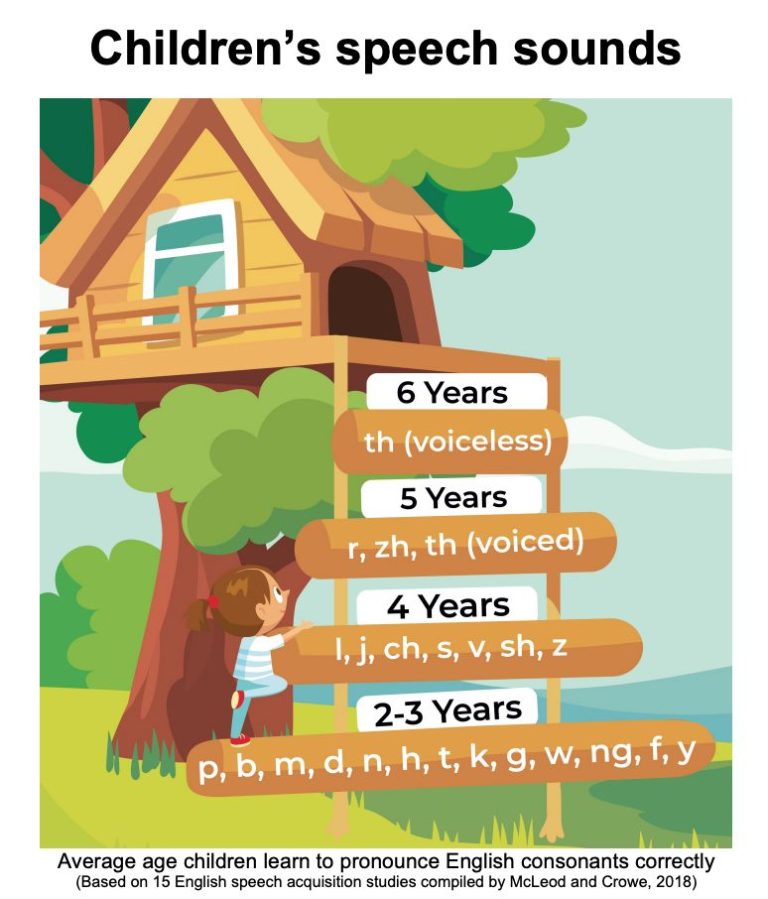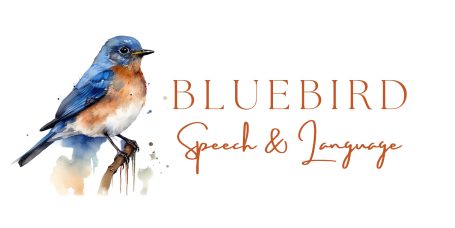SPEECH SOUND DISORDERS
A speech sound disorder is a communication disorder in which children have persistent difficulty saying words or sounds correctly. Most children make some mistakes as they learn to say new words, but a child who does not say sounds by their expected ages may have a speech sound disorder. Only a certified speech language pathologist is qualified to provide a differential diagnose of speech sound disorders, which include problems with articulation (sound production), phonology (sound patterns), Childhood Apraxia of Speech (deficits of motor planning), and those that may be caused by structural differences (cleft lip/palate) or physiological deficits (tongue thrust, dysarthria).
Children’s consonant acquisition in 27 languages: A cross-linguistic review. American Journal of Speech-Language Pathology.
doi:10.1044/2018_AJSLP-17-0100.
Available from: https://ajslp.pubs.asha.org/article.aspx?articleid=2701897

- Articulation refers to how we produce specific sounds with our mouths. Articulation disorders often involve substitutions of one sound for another (/w/ for /r/ as in "wabbit" for "rabbit") or sound distortions, such a frontal or lateral lisp. Most children can say almost all sounds correctly by the age of 5.
- Phonology refers to how we use individual sounds in the context of language. Children with phonological delays/disorders frequently exhibit consistent patterns of sound substitutions or omissions. For example, children with the phonological pattern of "fronting" consistently produce sounds made with the back of the tongue (like /k/ and /g/) with the front of the tongue; so, /k/ becomes /t/ ("key" sounds like "tea") and /g/ becomes /d/ ("go" sounds like "doe"). The more phonological patterns a child exhibits the more difficult they are to understand. If a 3-year-old isn't able to be understood by strangers about 75% of the time (90-100% for 4-year-olds) then a speech assessment should be recommended.
- Childhood Apraxia of Speech (CAS) is a rare motor speech disorder. Children with CAS have problems saying sounds, syllables, and words not because of muscle weakness or paralysis, but because the brain has problems planning movements of speech. The child knows what he or she wants to say, but his/her brain has difficulty coordinating and planning the muscle movements necessary to say those words. Children with CAS are often extremely difficult to understand. CAS is often confused with other speech sound disorders and should only be diagnosed by a speech language pathologist with expertise in motor speech disorders.
- Tongue Thrust (also known as a myofunctional disorder) occurs when the tongue protrudes out of the mouth or forcefully against the back of the front teeth when swallowing or talking. Children with a tongue thrust often present with errors of particular sounds, such as lisping of /s/ and /z/ sounds.
- Dysarthria is a motor speech disorder caused by muscle weakness. Signs of dysarthria include slurred speech, breathy vocal quality, and imprecise sound production.
- Cleft Lip/Palate Children with cleft lip and/or palate often need speech intervention to monitor speech development and to treat any speech delays or errors that they might develop. Some children will require speech therapy. Others will require further surgery. And others may require both.
Bluebird Speech & Language
Located in the DragonTree Reading Center
269 Route 31 South, Suite 4, Washington, NJ 07882
(201)874-8861
sandra.bluebirdspeech@gmail.com
© Copyright 2023 Bluebird Speech & Language. All rights reserved.
We need your consent to load the translations
We use a third-party service to translate the website content that may collect data about your activity. Please review the details in the privacy policy and accept the service to view the translations.
